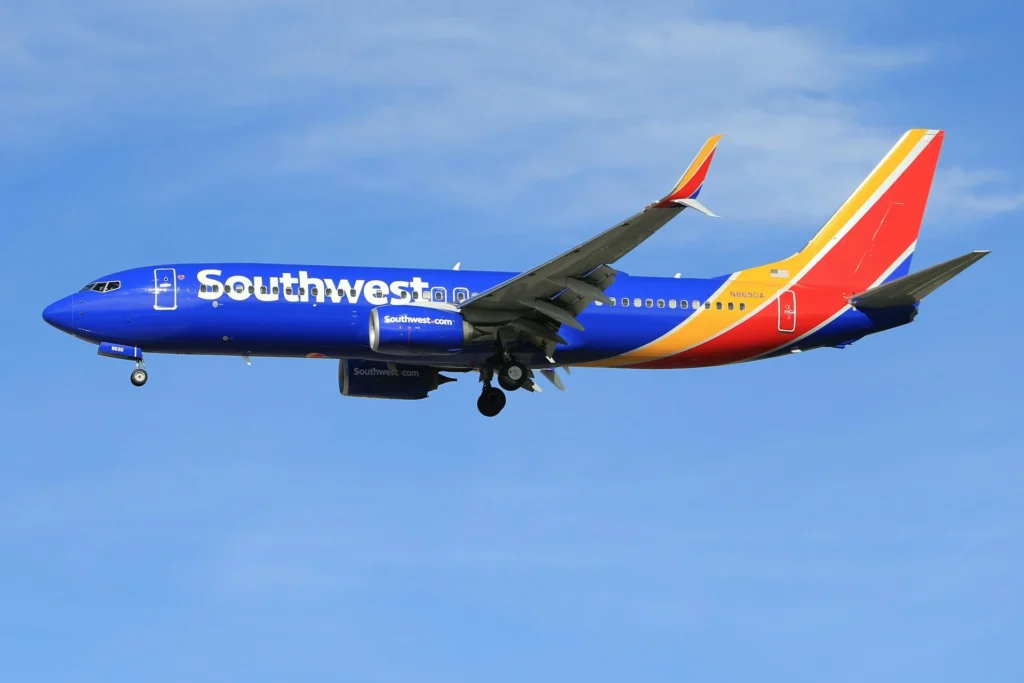DALLAS- Southwest Airlines (WN) has reportedly set its sights on launching transatlantic service to Reykjavik (KEF), marking a significant potential expansion of its international ambitions. The proposed service would connect Baltimore/Washington International (BWI) to Iceland, with flights expected to go on sale in late 2025 for a spring 2026 launch.
This move comes after Southwest filed a broad application under the Open Skies treaty, signaling interest in accessing more than 130 countries. Iceland is now emerging as the first likely destination in this wider strategic pivot.

Southwest Europe Flights
Southwest Airlines’ decision to pursue international expansion under the Open Skies agreement underscores a strategic shift for the traditionally domestic-focused carrier.
Although the filing doesn’t name specific countries, internal discussions and media reports point toward Reykjavik (KEF) as a launch point into Europe.
Sources suggest flights could originate from Baltimore/Washington International (BWI), Southwest’s largest East Coast hub.
This potential new route aligns with Southwest’s interline agreement with Icelandair (FI), announced earlier in 2024. While Icelandair already serves the KEF–BWI route, the interline deal enables Southwest passengers to book itineraries that connect seamlessly to Icelandair’s 35 destinations across Europe.
However, due to pilot union constraints, Southwest may be required to operate its own metal across the Atlantic, rather than solely codeshare.

Limitations of Fleet and Market Strategy
Southwest’s exclusively all-Boeing 737 fleet presents a major obstacle in executing long-haul international flights. The 737 MAX 8 has limited range, and Southwest has minimal presence in key transatlantic gateways beyond Baltimore.
Adding its own Reykjavik flight may serve more as a compliance measure to meet pilot contract requirements rather than a profitable expansion effort.
In a broader context, Southwest’s growth options are increasingly constrained. It has retreated from Canadian expansion due to outdated payment technology and reduced inter-island Hawaiian services after overcommitting to the market.
The airline’s inability to operate in small niche markets due to aircraft size has also blocked viable domestic growth paths.
Despite limited fleet flexibility, routes into South America or the Caribbean—such as Cartagena, Lima, and Panama City—could offer better opportunities, given existing demand and competition from other carriers like JetBlue (B6), American (AA), and Spirit (NK).

Misalignment with Core Customer Base
Southwest’s legacy is rooted in affordable, hassle-free domestic service catering to middle-American families and business travelers. That customer base, while loyal, has a limited appetite for multi-leg journeys through Reykjavik just to reach Europe.
A typical Southwest traveler from Kansas City or St. Louis is unlikely to choose a Baltimore–Reykjavik–Paris itinerary, especially if the alternative is a one-stop trip on Delta (DL) or United (UA) with modern onboard amenities.
Adding basic economy fares and retreating from perks like free checked bags has already eroded some of Southwest’s unique brand identity.
A Reykjavik route may alienate more than it attracts, especially if executed without a significant upgrade in aircraft capabilities or passenger experience.
Strategic Growth Requires Equipment Rethink
If Southwest is serious about global relevance, a shift away from a 737-only fleet could be essential. Carriers like Alaska Airlines (AS) have already diversified through acquisitions and regional subsidiaries to reach underserved markets and international destinations.
Fleet diversification would allow Southwest to serve thinner routes profitably, access longer-haul destinations, and improve onboard amenities.
Without it, efforts like the potential Iceland service may appear more symbolic than strategic, offering limited upside while highlighting the airline’s operational rigidity.
Stay tuned with us. Further, follow us on social media for the latest updates.
Join us on Telegram Group for the Latest Aviation Updates. Subsequently, follow us on Google News

